Nina Notman speaks to the educators leading the charge to revamp how university students learn in the laboratory
‘I use the analogy of the difference between the books from the two original Bake Off hosts,’ to explain how the first year practical classes at the University of Strathclyde differ from traditional undergraduate chemistry labs, explains Patrick Thomson, the department’s head of first year. In 100 Cakes and Bakes, Mary Berry provides detailed step-by-step instructions, while Paul Hollywood’s How to Bake encourages experimentation and tinkering within a recipe framework.
The mainstay of chemistry laboratory classes has historically been Berry-style experiments designed to reinforce the theory taught in lectures. When students are given step-by-step instructions on how to run a titration, for example, ‘the assumption from the teacher’s point of view is that the students would learn how to titrate. But from the students’ point of view they just needed to know some numbers so that they could figure out the answer to the question because that’s what they’ll be assessed on,’ explains Michael Seery, deputy director of the Centre of Academic Language and Development at the University of Bristol, UK. He has been researching learning in chemistry laboratories since 2007 and oversaw the overhaul of the chemistry laboratory curriculum at University of Edinburgh between 2015 and 2021. Students can successfully perform the steps without necessarily understanding what they’re doing, leaving them unable to repeat the technique without a detailed recipe later on, he adds.
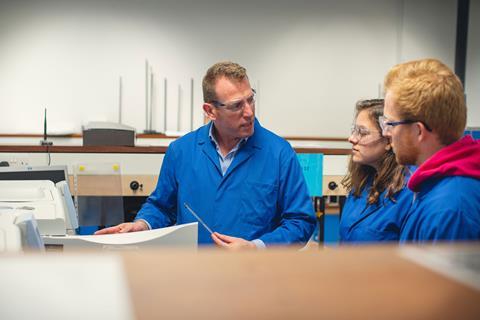
By the 1980s, it was clear that students who are explicitly taught practical skills and how to design and adapt experiments in their first few years of undergraduate study are better prepared for final year research projects. ‘When students start doing projects, it is a big jump from having a script to follow to being told you’ve got to be able to figure out everything for yourself,’ says Nimesh Mistry, a chemistry teaching fellow at the University of Leeds in the UK. ‘Some students eventually get to grips with what they’ve got to do, but not all of them do, and it can take them a long time.’
Academic culture is notoriously slow to change, but over the past decade or so, a handful of universities in the UK and beyond have made wholesale changes to the way their chemistry laboratory classes are conducted. Many others have taken – and are still taking – baby steps away from traditional chemistry lab classes.
‘We are moving away from the discourse of labs as a place where you just confirm the theory,’ Seery explains. ‘It’s a change of emphasis,’ agrees Malcolm Stewart, director of chemistry teaching laboratories at the University of Oxford, UK, who initiated a complete update to how practical chemistry is taught at the university in 2015. ‘Our job is to get people from being pre-university students to research students,’ Stewart adds. ‘We felt the way to do that was to give people the practical skills they needed, so that they can answer any research question, rather than pick up practical skills because it was backing up the theory.’
Be prepared
The most significant and widespread changes to lab classes in recent decades relate to safety and pre-lab assignments. ‘The general vibe now is that students, from certainly after first year, are expected to do some kind of safety audit. [They might need to] pull up a Coshh [safety] form and get it ticked off or do a pre-lab safety quiz,’ say Seery.
The use of pre-lab assignments, or pre-labs, was accelerated by the digital revolution during the Covid-19 lockdowns, and they typically cover far more than safety. They are particularly suited to providing conceptual details, Seery explains. ‘The core part of a good pre-lab is preparing students intellectually for what they’re going to do in the lab session itself,’ he adds. This is information ‘they are able to draw on when they’re in the lab and go “OK, I’m going to see fizzing when I pour this in because that’s an acid–base reaction.”’ Mistry says that pre-labs at Leeds contain ‘some background theory related to the technique, like how thin layer chromatography works or why you heat or cool reactions’. Operating procedures are also often covered in pre-labs, sometimes in videos on how to perform techniques. However, Seery notes that the lab itself is the best place to present the deep details, such as when to press this button or turn that knob.
Pre-labs are normally online with the information conveyed through videos, text-based resources and computer simulations. Online quizzes are frequently used to check understanding. ‘I wrote a review of pre-labs in 2017 and essentially the take-home message was that any kind of pre-lab is a good thing: they have intended and unintended good consequences,’ Seery says.
Teaching transformations
Chemistry laboratory programmes that have been entirely revamped, such as those at Edinburgh and Oxford, use scaffolding. The Oxford course ‘starts very handheld through each and every step [with] lots of preparation to help our students be aware of what they need to do beforehand. Then, a demonstrator will help to guide them through it,’ explains Craig Campbell, a lecturer in practical chemistry at Oxford. ‘But every time the students use the technique beyond that, they will have less support, but we may also introduce new facets to using the technique, in what is known as our spiral curriculum for teaching skills,’ he adds.
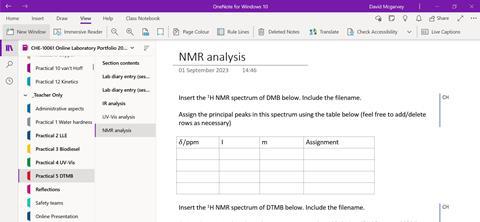
‘We start off with giving students really quite explicit instructions and then when they revisit that [same technique] later in the year, the “instructions” would be in the style of a journal article experimental section,’ says David McGarvey, a physical chemistry lecturer at Keele University in the UK. Other popular pedagogical approaches for getting undergraduates more research-ready include problem-based learning and – most recently – inquiry-based learning. There is no agreed description of what an inquiry-based lab class should look like but the goal is always for students to develop their abilities to ask questions, design experiments, adapt procedures, interpret evidence and make explanations based on their findings.
When and how inquiry-based learning is introduced varies greatly between universities. At Oxford, for example, undergraduates are exposed to snippets throughout their first year. ‘Students do quite a lot of creativity and experimental design,’ says Stewart. Choices they make include picking an appropriate flask size, choosing a drying agent, selecting an extraction solvent, and deciding what pH to make a solution.
At Strathclyde, inquiry is also sprinkled throughout the first year chemistry practical curricula, concentrated in two experiments. In their first term, inquiry features in the introduction of thin layer chromatography (TLC). ‘Conventionally, you teach the students: this is how you spot a plate; this is how you run it; put the line here or it won’t work; put the lid on the chamber or it won’t work. What I do instead is ask the students to intentionally make one of those mistakes and see what happens,’ explains Thomson. Doing this lets them ‘feel like they’ve had a real science-y experience and have a tiny little potted experience of failure that they’ve quickly worked out the cause of’, says Thomson.
In their second term, Strathclyde first years carry out reaction condition screening, a process widely used in research labs but not normally on undergraduate curricula. It involves running the same reaction under a variety of conditions to identify which are most effective. ‘We give the students a carboxylic acid ester and ask them to work as a team to screen conditions to hydrolyse it,’ says Thomson. ‘We’ve chosen our esters very carefully to be very, very active to quick hydrolysis [meaning] each group of students can iterate 6–12 conditions in about 90 minutes, evaluating them by TLC to figure out which choices are best to hydrolyse an ester.’ The students learn through trial and error that using more base is better, as is a more polar solvent, Thomson explains. His first-year students consistently report these two inquiry experiments as their favourite lab classes in end-of-year teaching evaluations.
CSI: Nottingham
Undergraduates at Nottingham complete a lab-based escape room called Da Vinci’s Curse at the end of their first year. The escape room is inquiry-based and was introduced in 2022 with the purpose of skill consolidation. It is a team-based activity where students work through three challenges to ‘escape’ the teaching lab, explains Anna Bertram, the chemistry department’s director of laboratory teaching.
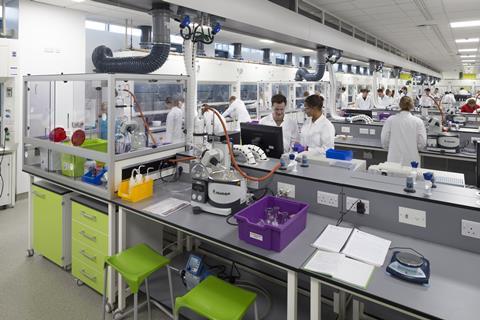
In the first ‘room’, the students separate three dyes and determine the functional groups present in order to identify the compounds. To do this they need to use the theory of acids and bases and recall how to carry out separation by liquid–liquid extraction. ‘They have to present their hypothesis to the demonstrator and if they are convinced [that the students have understood the task] they give them the next envelope, which is the passage into the next room,’ says Bertram. The second room is an infrared experiment and the third involves TLC. The students end up with a numerical code that opens a combination lock on a locker. ‘They get a nice key with the label that says “Congratulations, you’ve cracked Da Vinci’s Curse” written in atomic numbers,’ she adds.
At the end of their second year, Bertram’s students work in groups to take on ‘CSI: Nottingham’, based on the popular TV show. This activity started in 2021 and begins with a CSI-style video starring chemistry professor and YouTube star Martyn Poliakoff in which students are asked to help solve a fictitious crime: the poisoning of the River Trent. ‘There’s an algae bloom and there’s a theory that some metal complex has been dumped in the river and created the bloom,’ Bertram says. They are given a water sample and need to work out that different metal complexes need to be made and tested against the water using ultraviolet spectroscopy. ‘Everything that they need to do is based on what they’ve already done in their second-year labs,’ she adds.
The Pogil Project
In the US, the process-oriented guided inquiry learning project (Pogil) provides a home for chemistry educators running inquiry-based lab classes. ‘Most of the Pogil labs are discrete single lab experiences where you have a question, and you’re going to work through two or three learning cycles and then, by the end, you’ll have data to answer initial posed questions,’ explains Ruthanne Paradise, a senior chemistry lecturer at the University of Massachusetts Amherst and a member of the Pogil for the physical chemistry laboratory sub-group. ‘We want the students to be able to think “OK, I’ve done an experiment, what does that result mean and how can I probe a little bit further?”’ adds Alexander Grushow, a chemistry professor at Rider University in New Jersey and a member of the same sub-group.
Now, we have students make the choices
One of Grushow’s Pogil experiments sees students make a stew with dried chickpeas. First, students must work out that the chickpeas need pre-soaking in water. ‘The question then becomes: how long does it take?’ he says. Answering that involves a kinetics experiment where water salinity is tested and knowledge of osmotic pressure is drawn upon. One of Paradise’s favourite Pogil labs is an adaption of a classic experiment that looks at the stability of the protein myoglobin while a denaturant is being added to unfold it. The goal is to find the denaturant concentration at which there is an equal amount of folded and unfolded protein. ‘In the classic, they tell you “Prep this solution, this solution, this solution and this solution, take these measurements and analyse the results.” Whereas now, we have students make choices,’ she says. They choose the concentrations of the myoglobin solutions from a range and are then asked to improve the data by working out what extra data they need to collect.
It’s good to talk
Safety is a common concern voiced by universities considering dipping their toes into inquiry-based lab classes. ‘What most people have struggled with is how you develop this for an undergraduate environment while still being safe,’ says Stewart. There are concerns about the ‘dangers associated with allowing everyone the freedom to potentially go and mix things that could be dangerous’, he adds. To overcome this, the options open to students are carefully curated to ensure all available choices are safe ones. Then, before starting, the students are asked to discuss experimental choices with demonstrators.
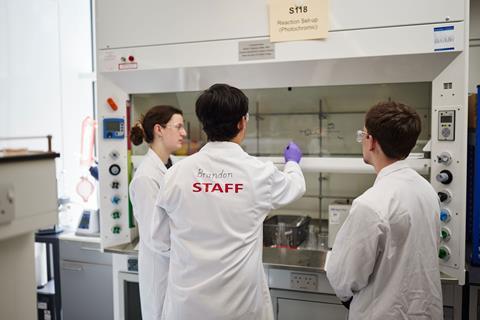
The value of dialogue in inquiry-based labs extends far beyond safety. ‘All of the [universities] where good things are happening are where dialogue is embedded in a way that it’s explicit,’ says Seery. In the practical curriculums he designed, students are prompted by pre-lab questions to speak with demonstrators as they enter the lab and then again at each point that decisions have to be made during the experiment.
To help cement understanding, demonstrators ask many questions back to students. ‘I tell my folks: if someone asks you a question, the first thing you should ask back to them is “What do you think?” [This] makes them think about what they’re doing in the lab [and] helps them be more confident in what they already know,’ says Thomson. At Amherst, Paradise runs inquiry-lab training courses for her teaching assistants. ‘We train the TAs to engage with the students in an inquiry fashion as opposed to say “Do this, this and this,”’ she says.
Oxford has also embedded dialogue into assessment across all three years of the practical course. ‘Students get some one-to-one or two-to-one time with a member of staff or one of the demonstrators to chat about what they what they did,’ says Megan Midson, departmental lecturer in the university’s chemistry teaching labs. ‘There is a mark associated to the quality of the results the students obtain [and] also a mark on whether they can hold a robust discussion about it. It’s a learning opportunity for them and if they didn’t understand [something] they can chat to us about it,’ she adds.
Writing up
Oxford is not alone in making changes to the way lab results are presented for marking. Paper lab diaries became a thing of the past at Nottingham when the teaching labs went paperless after a building renovation in 2015. First- and second-year students use tablets to access a virtual learning environment containing pre-lab exercises, experimental procedures and data sheets that they download, fill out and then submit for marking. Third years use Microsoft OneNote to replicate traditional lab notebooks.
It’s OK to start small
Keele introduced online laboratory portfolios in autumn 2023 for its first years. Tablets are not used in the lab; instead, photos are taken of data collected in the lab and uploaded to OneNote, explains Chloe Howe, lead of first year chemistry labs at the university. The write-up is guided with structured templates showing, for example, how analytical data should be presented. Going digital has led to faster marking and improved feedback to students, says Howe. ‘With the online portfolios we’ve been able to give feedback on a really regular basis,’ she says, adding that the student feedback about the portfolios is ‘unanimously positive’. Keele is now working to embed online practical portfolios into its second- or third-year practical course.
In chemistry departments that have reconstructed – or are reconstructing – their entire laboratory programmes, having dedicated laboratory teaching teams have been proven to be the most effective way to achieve wholesale change. This is the best way to disconnect lecture modules from practical courses and achieve a cohesive practical curriculum, says Stewart. However, the lack of such a set-up doesn’t prevent changes to the way practical chemistry is taught. ‘It’s OK to start small,’ says Paradise, ‘either by changing the types of pre-lab questions you have across all your experiments or just changing one experiment and seeing how that goes.’
Nina Notman is a science writer based in Salisbury, UK
Article updated 10 September 2024 to clarify Nottingham’s use of inquiry-based learning


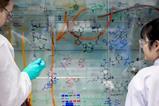

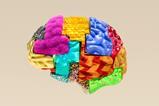












1 Reader's comment